Floating solar farms could be worth $10 billion by 2030, but they have a dirty secret
Ever since the first solar power plant was built in the 1960s, solar arrays have become a familiar sight on mountains, in deserts, and even on rooftops. But in the past decade, a new breed of solar farms has been cropping up in large bodies of water.
Known as floating solar farms, these installations are about 10% to 15% more expensive than traditional farms, but they’re full of perks: They don’t use up any land; they’re up to 16% more efficient because the water helps keep them cool; and, when installed on hydroelectric dams, they help limit evaporation, saving more water for hydropower.
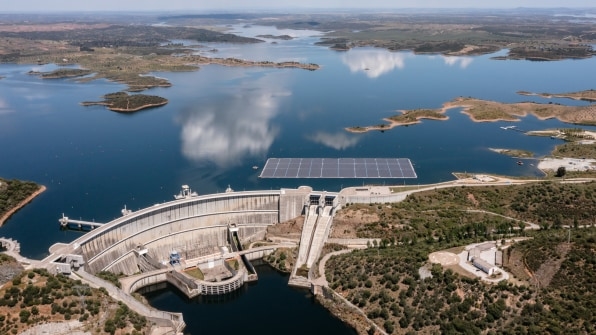
Still, they have a dirty secret: The panels sit on thousands of floating modules made of virgin plastic.
This isn’t the case with Alqueva, a new floating solar farm taking shape in southern Portugal. But let’s back up a little. Floating farms work just like land-based solar farms; however, instead of being mounted on metal racks, the panels are attached to hollow plastic buoys anchored to the bottom of a lake, dam, or water reservoir.
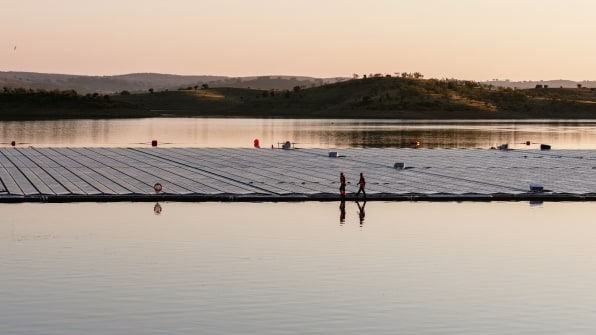
Typically, these buoys are made of virgin plastic, which requires natural gas or crude oil to produce. But in Alqueva, the panels sit on thousands of floaters made from recycled plastic and cork. The composite material was developed by Amorim, a cork-processing group that has used cork composites as a thermal isolator for NASA space shuttles. At Alqueva, it has reduced the farm’s carbon footprint by 30%.
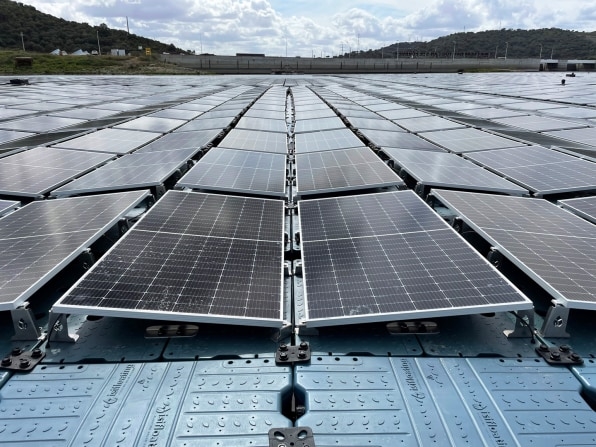
In 2021, the global floating solar market was valued at $2.5 billion. It’s estimated to surpass $10 billion by 2030. In 2020 alone, there were more than 300 floating solar farms, all of which used virgin HDPE, the kind of plastic found in milk jugs, detergent, and shampoo bottles. HDPE is highly durable and lightweight, and doesn’t absorb moisture easily, all of which makes it a perfect contender for a material designed to float on water for decades. And yes, it can be recycled. But research shows that recycling won’t solve the problem of plastic pollution.
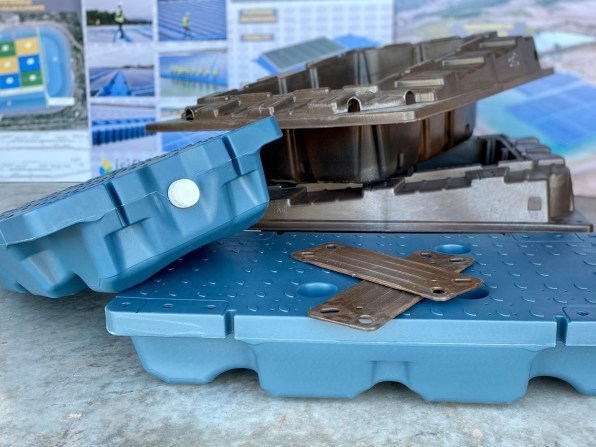
That’s where Alqueva comes in. The floating solar farm was developed by EDP, a Portuguese utility company that also built Portugal’s first floating wind farm. When Alqueva officially kicks into gear at the end of June, EDP estimates it will generate enough energy to supply 30% of the homes in the region, or about 1,500 families. With 12,000 panels covering the equivalent of four soccer fields, it’s set to become the biggest floating solar farm on a hydrodam in Europe.
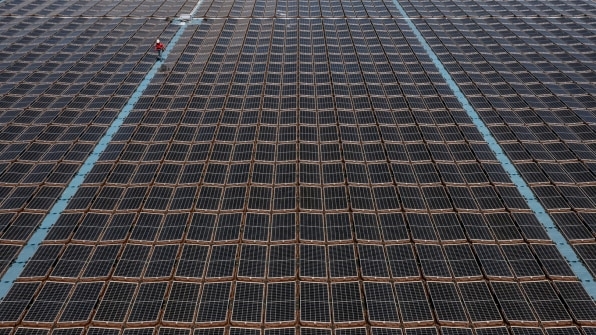
All of those panels are sitting on a floating network of modules connected to one another like puzzle pieces. Like other floating farms, these modules were designed to last at least 30 years. But unlike other farms, when it’s time to replace them, no gas or oil will be used to produce the new set of modules (provided, of course, they’re replaced with another set made of cork and recycled plastic).
According to Miguel Patena, a group director at EDP who’s in charge of the solar farm, this is the first time the material is being used for this kind of application. The exact formula remains a secret for now.
Considering the U.S. has just set out to build the country’s biggest floating solar farm, in New Jersey, a more sustainable alternative to virgin plastic floaters couldn’t come any sooner.
(63)


